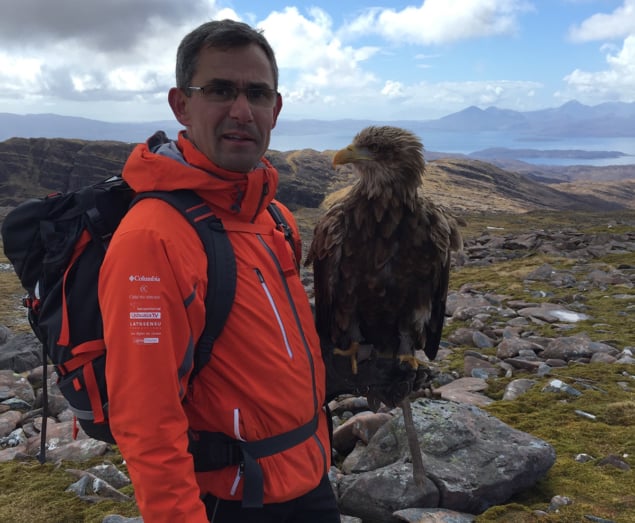
Rick Thomas is an experimentalist, he likes to test the models. Normally, he does that using sensors attached to drones and planes. But you’re not allowed to fly drones over cities and to measure the urban boundary layer you must stay lower than an aircraft can go. The answer? A tame white-tailed eagle. Complete with sensor pack and GPS tag, the eagle can fly above the city and record the temperature of the atmosphere at the heights Thomas needs. Just one snag: first the Birmingham University, UK, researcher had to check if the eagle’s body would heat up the sensor and give false air temperature measurements.
Fortunately, tests above the Scottish countryside for the Cityflocks project revealed that if the eagle flies above a certain speed, the sensor will provide an accurate temperature reading. It helps that when the eagle is flying with its head down, the sensor faces directly into the airflow without obstructions. When the eagle’s at rest, however, that’s another matter – Thomas’s readings show the measured temperature rising when the bird takes a break.
Trained eagles are hard to come by so Thomas has also tested a smaller, lighter version of the sensor pack on homing pigeons, as yet only in rural areas. He’s teamed up with the Royal Pigeon Racing Association, who are interested in finding out more about the routes their pigeons take. There are also plans afoot to put the sensors on gulls in Birmingham, which could have the side benefit of revealing more about their behaviour. Thomas is keen to stress that all the necessary precautions were taken to ensure the welfare of Victor and the other birds.
As well as presenting his findings in a couple of posters at the EGU 2018 General Assembly in Vienna, Thomas has also published some of these results in an early online version.



